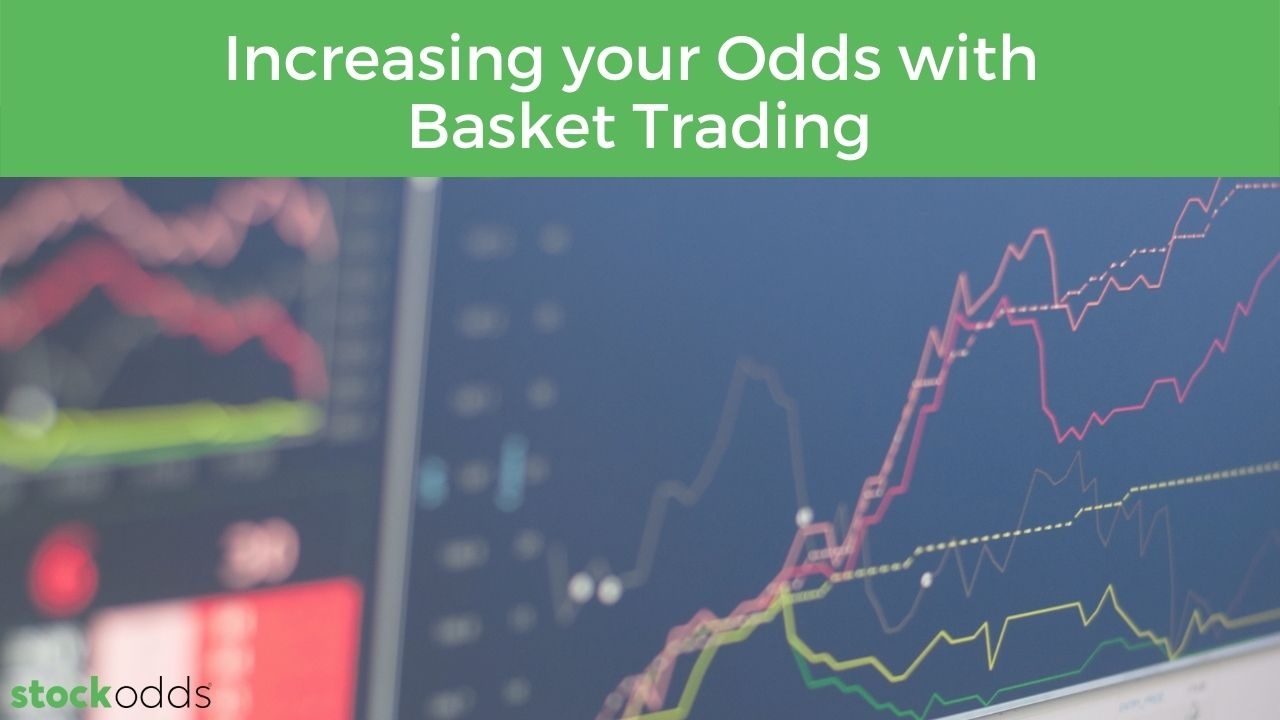Increasing your Odds with Basket Trading
Feb 16, 2022
Basket trading is often thought of as a tool for investment firms or hedge funds. However, the retail trader can also benefit from taking advantage of this active form of trading. Before we get into why people learning about the stock market should consider basket trading, we’ll do a quick briefing on what they are, the types that exist, and how weightings work.
What exactly is basket trading?
Basket trading is a solution for buying and selling of multiple securities which could be executed simultaneously or through a variety of methods. A simple definition for a basket would be buying or selling around 20+ securities and tracking that against an index. Baskets could be comprised of equities, commodities or currencies. The proportion of the various securities, commodities, and currencies is up to the trader and can be done in a few ways known as weighting. There are also watch baskets, which can be set up before purchasing the securities to understand how each symbol, as well as the basket as a whole, performs. Baskets could be designed to represent many motifs or themes.
Long/short basket trading vs basket investing
Traders and investors generally have different objectives. In addition to investors typically having a longer timeline, they usually enter long positions only. For traders who wish to hedge against market moves up and down, both long and short positions can be mixed within a basket (usually a distinct buy-basket and a distinct short-basket is formed). In the case of stock-based baskets, traders can select long positions with symbols expected to outperform, and short positions with symbols expected to underperform. After choosing which stocks and ETFs to purchase and which to sell short, the total long and short positions can be balanced in several different ways.
So, what are the weightings?
How your basket is weighted is up to you, and there are generally four ways to do it: by capital or equal dollars per position, by percentage based on components of an ETF, Beta balancing, and Average True Range (ATR) or Historical Volatility (HV) metrics. You could also use any form of percentages weightings that uses some intelligent methodology. In place of ATR, some use Average Daily Range (ADR). In short, the above methods mean that you are normalizing exposure across instruments so you don’t fight against the math.
For example, if you had one stock with a $10.00 ATR and nine stocks with each a $1.00 and you were right on the nine $1.00 stocks, all moving in your favor by an ATR, and wrong on the stock having the $10.00 ATR, moving an ATR against you, it would be a loss overall, even after being right on 90% of the symbols.
The more symbols you deploy and the smaller the quantity of capital into each instrument, the better equal capital per symbol performs (like $2500 placed into each symbol). The fewer symbols, the greater need for consideration of how to normalize your baskets with other weighting methods.
How does basket trading increase the Odds?
There are several ways basket trading increases your odds in the stock market.
Lowers Variance:
We hear this feedback from basket traders frequently. How amazing it is to have stable, more insulated results given the market volatility or direction. When a trader lowers variance (the swings in profit or loss) in their trading account, they can increase returns over the long sample, all while reducing the risk of ruin.
Increased control:
For one, basket trades increase independence and control. The types of securities, stocks, commodities, and currencies in the basket are entirely up to the trader. As mentioned previously, you get to create your own motif or theme. Then, by monitoring the performance of the basket trade, against a backdrop of the market, you can make informed decisions about adding directional weight to the baskets. The option to trade individual securities within the basket also gives greater control over the bottom line as you can allow things to work all day, or close positions selectively as targets are reached.
Mitigating Risk:
Purchasing different securities simultaneously mitigates risk through diversification. Combining assets also reduces exposure to market volatility; a basket of stocks will be less volatile than a singular stock. Not to mention, trading baskets is far more efficient than picking up shares by putting in orders one at a time. If you’ve ever dreamt of tailoring trades to fit your trading objectives, then basket trading is the way to go.
Specificity:
Customizing the trade can target specific sectors and stocks, such as technology or high-yield dividend companies. Basket trades also allow for customized risk management, as the selected securities can be chosen for their volatility, or lack thereof, and can be rigorously monitored against an index or ETF.
Are there tools to help capitalize on basket trades?
There are various ways that basket trades increase your odds in the market, but what about increasing the odds of choosing the right securities for your basket? We’ve got you covered. MyStockOdds.com offers daily Odds and Average Performance expectations we like to call “predictive analytics” and provides insights for your long as well as your short opportunities. You can curate baskets from a variety of signals and subsequent time frames. You can also use the Web Screener or API to go back in time to examine what stocks could have been selected for any particular day or event, and witness for yourself, exactly the outcome that occurred. Start increasing your odds with one of our plans here.
Start Trading with Odds
Get access to the Seasonality Almanac Dashboard, as well as 1 basic course, for free!

